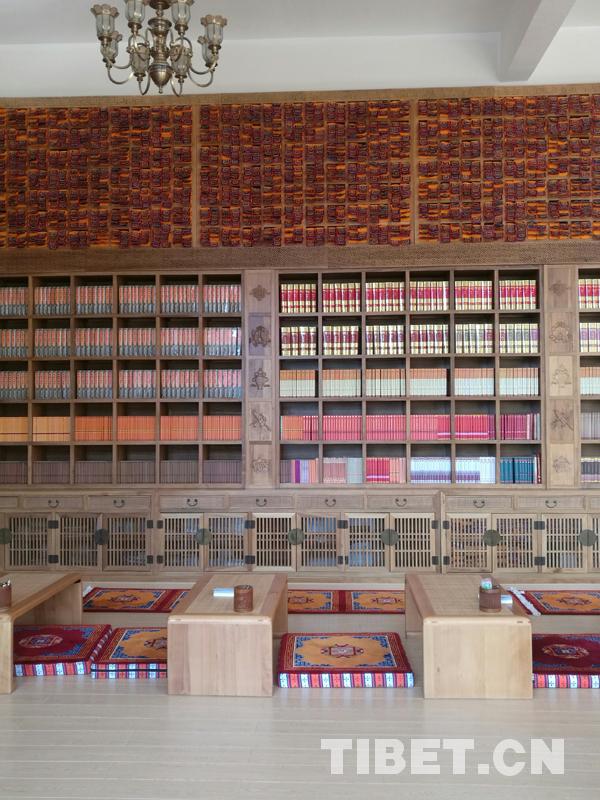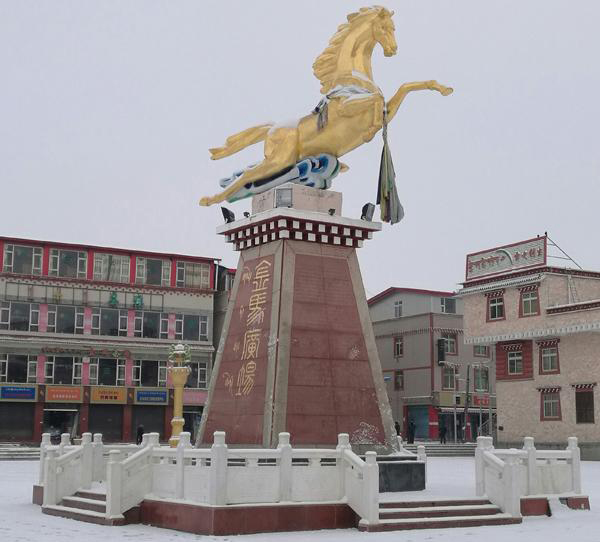Travel notes: Serthar, a golden horse on the white ice fields (III)


The high mountains block the field of view and old traditions restrict people's ideas. Even though Serthar has seen significant improvements in recent decades in regard to social causes, such as education, it is still relatively backwards.
The labor force employment situation is poor. For employers, they prefer employees from farming areas to those from pastoral areas, for the latter often run out of steam after a few days. It is understood that in recent years herdsmen have been attaching more importance to education, even buying or renting a house in the nearby city to accompany their children while they pursue studies. For the government, a high quality education received by children is also encouraged.
In terms of people's way of thinking and lifestyle in Serthar, I think some should be stuck to, some must be abandoned and some should be reformed. Inevitably, this is a difficult process, but no matter what they have to embrace the changing outside world.
Industry in Serthar is definitely underdeveloped. Animal husbandry of course carries more weight. But in my opinion, developing tourism is a possible choice in future development and I am willing to be a spokesperson for Serthar’s tourism.
In general, people are accustomed to taking the travel route of 317, 318 National Road from the south, which is the Sichuan-Tibet Ancient Tea Horse Road into Serthar, for it is already a mature tourist route. During last year's Golden Week, tens of thousands of people passed through Serthar through this route every day. But here I'd like to recommend the Ancient Salt Trail in the north, hoping it can become a new popular tourist trail.
Long time ago, the Ancient Salt Trail leading to the north was opened by the tough people of Serthar. In late Spring and early Summer, people organized a team to pick up salt from the salt lake in the north and then transport it back home. Starting from Serthar, the ancient road is more than 400 kilometers long, and it takes yaks over a month to go there and back.
The salt transported back not only satisfied the needs of the Serthar people, but was also used to trade with the surrounding farming areas. In 1941, after the local government introduced mining management of salt lakes, the Serthar people refused to pay taxes and stopped transporting salt from there. The Ancient Salt Trail was gradually forgotten then.
Today, the transportation on the Sichuan-Qinghai border is very convenient. For those self-driving travelers who have been to the Holy Land Lhasa, Shangri-La and Daocheng Yading, why not try the route from Chengdu to Serthar and then to Xining in Qinghai province? This is a north-south line that links the Qinghai-Tibet line and the Sichuan-Tibet line, the Amdo Tibetan area and the Gampa Tibetan area, the Yangtze River Basin and the Yellow River Basin.
After taking this route, I believe you will have a completely different experience and a new in-depth understanding of the Qinghai-Tibet Plateau’s natural geography and human history.
Your Comment
Name E-mailRelated News
-
;
-
-

-
Travel notes: Serthar, a golden horse on the white ice fields (II)
Serthar is located at the border of Sichuan and Qinghai, between Amdo and Gampa. Regardless of which direction you’re looking from, it is very far from big cities.
-
-
-

-
Travel notes: Serthar, a golden horse on the white ice fields (I)
Serthar means "Golden Horse" in Tibetan. What does a Golden Horse running on the snow look like? I honestly have no idea. Although I have visited the pastoral areas of Tibet and other Tibetan areas many times, this was the first time I stayed on the grasslands, en
-
Based in Lhasa, Tibet Vista is a Tibet travel agency that specialized in Tibet permit, and Tibet tours for both private and group travelers at a local price!
•4 Days Lhasa City Group Tour from USD 460 •8 Days Everest Base Camp Group Tour from USD 850 •15 Days Mt.Kailash Group Tour from USD 1780 •2016 Tibet Train Tours from Beijing, Shanghai, Chengdu, Xining,etc










